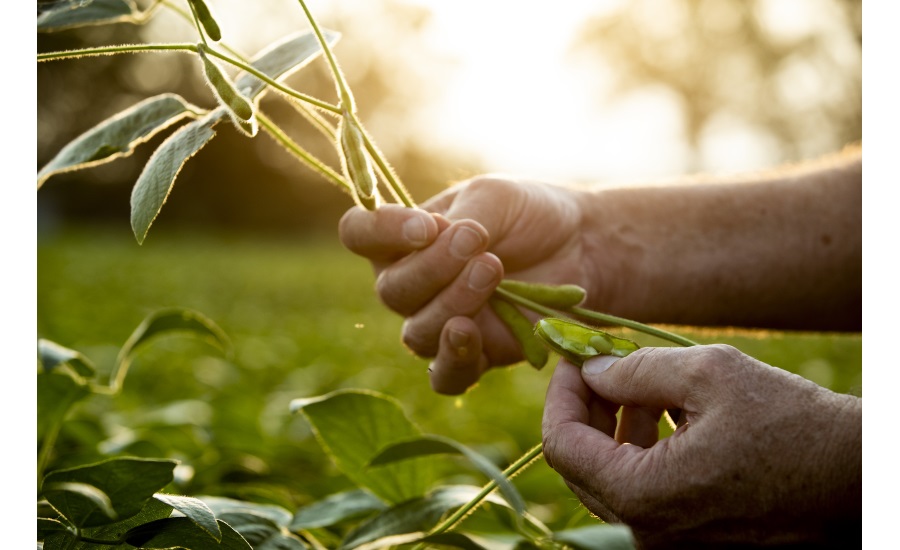As more food companies move toward regenerative agriculture commitments to meet bold sustainability goals, close collaboration between the food industry and farmers is key to ensuring true sustainability along the supply chain. That was the overarching message when soybean farmers and food companies discussed the complexities of regenerative agriculture during a September virtual roundtable meeting hosted by the United Soybean Board (USB) and The Center for Food Integrity (CFI). The meeting was part of a broader effort by USB and CFI to foster collaboration between farms and food companies on the topic of sustainability.
Farmers shared their on-farm sustainability efforts to enhance soil health and sequester carbon through practices such as no-till and cover crops, and food companies detailed their current projects and how they work with farmer suppliers. While there was no consensus on a specific definition for regenerative agriculture, all agreed it’s about continuously improving farm sustainability while protecting natural resources and farmer livelihoods.
“It’s farming in a way that maintains productivity and improves ecological outcomes,” said Jason Rowntree, C.S. Mott professor of sustainable agriculture with the Department of Animal Science at Michigan State University and director of MSU’s Center for Regenerative Agriculture.
“It’s about improving water function and cycling, soil carbon and sequestration, and soil health,” said Rowntree. “But at the end of the day, regenerative agriculture is about the farmer. It must be profitable and edifying and something they can accomplish.”
Food companies described how they are working with farmers to reach sustainability goals. In 2018, Smithfield Foods committed that 75% of its grain would be sourced from farmers with established regenerative agriculture practices.
“To date, we’ve engaged more than two million acres in our sustainability initiatives,” said Brooke Wynn, senior director of sustainability for Smithfield Foods. “We’ve achieved that by working with agronomists to provide technical assistance to farmer suppliers on topics like nutrient management and the use of cover crops. We’ve also provided seed to farmers at reduced cost to help them put these best practices in place.”
“Grain production is 20 to 25% of our carbon footprint,” said Wynn. “We are striving to reduce emissions without lowering yields. At the end of the day, that’s what everyone wants.”
Cargill has worked across various supply chains over the years to enhance sustainability, including row crops, beef, cocoa in West Africa and palm in southeast Asia.
“What we find with regenerative agriculture is these principles around soil health and improving farmer profitability can be applied across geography and across farm size,” said Ashley McKeon, director of regenerative agriculture at Cargill. “We see regenerative agriculture as feeding a growing population, while improving farmer profitability and having positive environmental outcomes—a triple win. We asked ourselves how our company could play a role.”
Two years ago, Cargill set a commitment to advance regenerative agriculture across 10 million acres in North America by 2030.
“We immediately set the foundation and received an enthusiastic response that included farmers interested in engaging with us and enrolling in our programs,” said McKeon. “In our row crop sourcing, which includes soybeans, corn, wheat, and cotton, we’re supporting regenerative agriculture practices like reduced tillage and cover crops on over 668,000 acres. We’re confident we’ll get to a million acres by the end of this year.”
The good news, said McKeon, “is we’re not starting from ground zero with agriculture. Many farmers have been doing this for a long time. Our job is to help build on successes and remove some barriers that have gotten in the way of larger-scale adoption.”
“When we interviewed some of our growers, they said they want simplicity, transparency, and flexibility to suit their specific operation,” she said. “Our goal is to focus on the outcome, not dictate practices.
It's an approach Tony Mellenthin, Wisconsin soybean farmer and USB farmer-leader, appreciates.
“There’s no one-size-fits-all,” he said. “What works for a southern farmer may not work for a northern farmer in terms of conservation practices. But even though their approaches may look different, they’re still improving the sustainability of U.S. agriculture.”
When PepsiCo made a commitment last year to spread regenerative agriculture across all acres from which they’re purchasing, they did so because strong and resilient agricultural communities are the basis for maintaining their own growth, as PepsiCo is on a growth trajectory.
“We know we’re going to need strong farms into the future. Our goal is to keep farmers farming and do it in a way that improves their resilience as our climate changes,” said Margaret Henry, senior director of sustainable ag strategy at PepsiCo who grew up on her family’s Kentucky dairy farm. “Farmers are experiencing 10-year and 20-year weather events almost every year now and it’s hurting their pocketbooks directly.”
Data collection for measuring outcomes was discussed, with varying opinions on how to prove if regenerative practices are working. Henry recommended a balanced approach.
“We need enough data, but we don’t need so much that we’re doing mostly ‘farm bothering’ rather than ‘farm partnering’,” she said. “We will always push for the most reasonable, simple level of data collection that's credible and accurate, without having farmers spend a quarter of their time entering data on computers or giving up their rights to their data and privacy. Farmers should be in the field, farming, and hopefully our efforts will help them do that sustainably, long into the future.”
The demands at the farmgate for sustainable and regenerative practices will only continue to grow, according to Henry.
“Over the next 24 to 36 months in the food and beverage space, we’re going to see a tremendous scaling of what five years ago, we were doing this on a few thousand acres. Now we’re seeing scaled engagement all over the country reaching millions of acres and that momentum is only increasing.”






-(2).jpg?height=200&t=1631140111&width=200)

